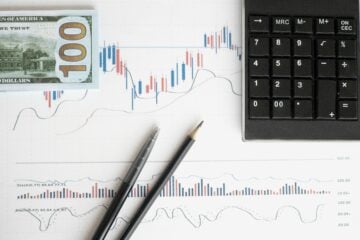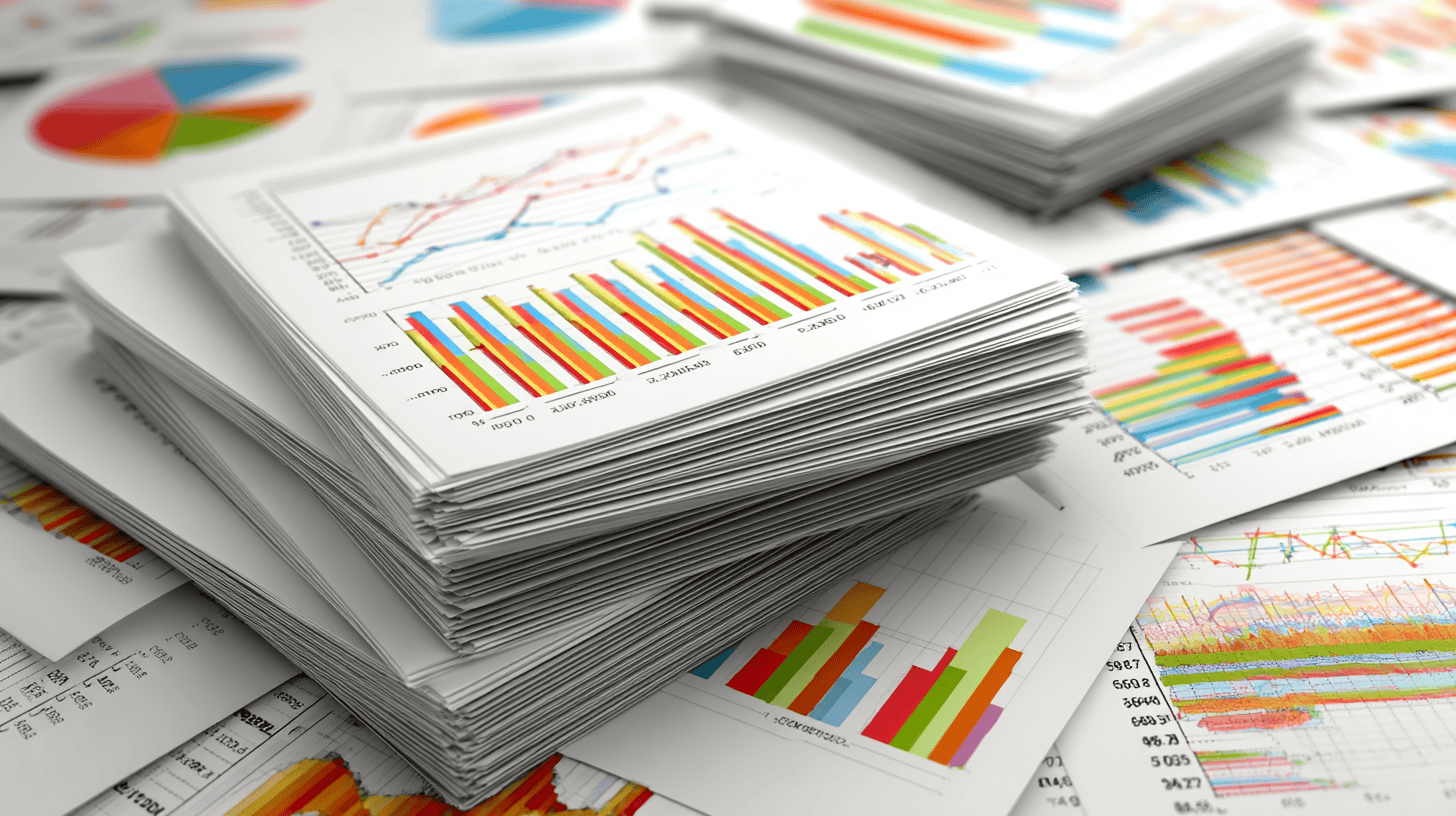| Number of companies that went public | Approximately 146 |
| Notable companies that went public | McDonalds, AIG, Avnet, etc. |
| Largest company that went public | McDonalds |
In 1965, there was a lot of excitement as many companies went public. This allowed everyday people to buy shares. Can you imagine owning a piece of McDonald’s? It’s like having a slice of a big apple pie! Let’s take a closer look at some of those companies and what made their IPOs special. You might find it fascinating! Keep exploring to learn more about these companies that had their IPO in 1965.
Major Events Affecting Stock Markets in 1965
A lot was happening in the world in 1965, and it had a big impact on the stock market. Some events made people feel jittery about investing. Here are a few major happenings from that time:
Escalation of the Vietnam War
In 1965, the United States sent many more soldiers to Vietnam. The number jumped from 75,000 to 125,000 troops! This increase made investors nervous. They worried about how the war would affect the economy. Would it cost too much? Would businesses suffer? People were unsure.
Investors often react to news. When they hear about wars, they think about money. War can change how people spend. It can also change what businesses earn. So, the more troops sent, the more worried people became. They thought about their investments and what might happen next.
Watts Riots

Source: AP Archive
In August, a big event shook Los Angeles. The Watts Riots happened after police actions upset many people. This unrest raised worries about safety in cities. People were concerned about how this chaos could affect businesses. Would stores close? Would people stop shopping?
The riots showed that not everyone felt safe. Investors didn’t like that. They feared that unstable cities could lead to losses in the stock market. Business owners worried too. They knew that if people felt unsafe, they might stop spending money. This could hurt the economy.
Northeast Blackout
On November 9, a huge blackout hit the Northeast. It lasted for up to 13.5 hours! Imagine being in the dark for that long! This made many people nervous. They began to wonder about power companies. Could they be trusted (1)?
When the lights went out, businesses lost money. Stores couldn’t sell goods, and people couldn’t work. Investors started to think about how this might affect power company stocks. Would they go down? Would people want to invest in them? The blackout raised big questions about reliability.
Malcolm X Assassination
In February, Malcolm X was killed. This shocking event left many people feeling uncertain. They worried about civil rights and social order. Would things get worse? Would people feel safe?
The assassination sparked discussions. People talked about justice and equality. Investors noticed the unrest and felt uneasy. They thought about how this might change the country. Civil rights movements could lead to more protests. If protests grew, they worried that businesses could suffer (2).
Rhodesia’s Declaration of Independence
In November, Rhodesia declared independence from Britain. This was a big deal! It raised concerns about global trade. People wondered how this would affect business around the world.
When countries change their rules, it can shake up trade. Investors think about how these changes might affect their money. Would new rules make things harder for businesses? Would trade slow down? These questions made investors uneasy as they considered their investments.
U.S. Troops in the Dominican Republic
In April, the U.S. sent troops to the Dominican Republic. This move made investors uneasy again. They worried about America’s role in the world.
When the U.S. gets involved in other countries, it can create uncertainty. Investors think about how this might affect the economy. Would it cost a lot of money? Would it lead to more conflicts? These thoughts made people cautious about investing. They were unsure what the future might hold.
Economic Policies
In August, the Voting Rights Act was signed. This was a big step toward equality. However, it left some people unsure about how it would affect the economy.
While equality is important, some investors worried about its impact. Would businesses change? Would new rules affect profits? These questions made people think. They wondered how the economy would adapt to the changes.
All these events created a mix of feelings among investors. Some were excited, while others were worried about the future.
Key Insights of IPOs in 1965

Credits: pexels.com (Photo by: Anna Nekrashevich)
1. High Initial Returns
In 1965, when companies went public, they often saw their stock prices jump up. On average, the stock prices rose by about 22% right after the IPO. This was a big win for many investors.
- This rise meant that people who bought shares quickly could earn money fast.
- Many investors felt excited and hopeful about their choices.
- The buzz around these IPOs made everyone want to join in.
2. Volatility in Returns
The returns from IPOs in 1965 were not the same for every company. Some stocks did really well, while others did not do so great.
- This made things a bit unpredictable. The standard deviation was more than 55%, showing how much prices changed.
- Investors needed to be careful. Not every IPO was a sure thing.
- Some people might have made money, while others could have lost it.
3. Market Conditions
The economy in 1965 was growing fast. Many people were excited to invest their money in new companies.
- This excitement helped many companies decide to go public.
- More IPOs happened because investors were eager to buy shares.
- The positive market conditions made it a good time for companies to offer stocks.
4. Underpricing Phenomenon
A common trend in 1965 was that companies often set their IPO prices lower than what they were really worth.
- This led to returns averaging around 22% for many stocks.
- However, some companies did not follow this trend. Some lost value after going public.
- Investors liked the lower prices because it gave them a chance to earn money quickly.
5. Hot Market Conditions
The year 1965 was marked by high investor enthusiasm. Many people were ready to spend their money on new shares.
- This led to a lot of companies deciding to go public.
- The excitement in the market made it a busy year for IPOs.
- Everyone wanted to be part of the action.
6. Diverse Range of Industries
The IPOs in 1965 represented many different industries.
- There were tech companies, fast food chains, and many others.
- This variety gave investors lots of choices.
- People could pick from a range of exciting new businesses.
7. Long-Term Performance Trends
Many IPOs had strong initial returns, but that did not always mean they would do well later.
- In fact, some of these stocks did not perform as well as the rest of the stock market over time.
- Investors had to think about holding these stocks for the long run.
- It was important to do research before deciding to keep an IPO stock.
8. Impact on Future Offerings
The experiences from IPOs in 1965 changed how companies thought about going public later on.
- Companies learned from the successes and failures of their peers.
- They adjusted their strategies based on what happened in 1965.
- This helped shape the way the IPO market worked in the years to come.
Companies That Had Their IPO in 1965

Credits: pexels.com (Photo by: Laura Tancredi)
1. Johnson Service Company
- Date of IPO: October 11, 1965
- Industry: Building Services
- Details: This company is now called Johnson Controls. They help make buildings smarter and more efficient. This means they help save energy and keep things running smoothly inside buildings.
Johnson Controls works on many projects. They focus on: - Heating and cooling systems
- Security systems
- Energy management
Because of their work, buildings use less energy and cost less to run. This helps the environment and saves money for everyone.
2. American International Group (AIG)
- Date of IPO: 1965
- Industry: Insurance
- Details: AIG is a major company in the insurance world. They offer many types of insurance, including home, auto, and life insurance.
AIG helps protect people and businesses from unexpected events. They make sure that: - Families can get help after accidents
- Businesses can recover from losses
AIG has grown a lot since 1965. They are now one of the biggest names in financial services, helping millions of customers around the world.
3. Analog Devices
- Date of IPO: 1965
- Industry: Semiconductors
- Details: Analog Devices makes important parts for electronics. Their products help devices like phones, computers, and cars work better.
They focus on: - Sensors that gather data
- Converters that change signals
- Amplifiers that boost signals
These components are critical for technology. Without them, many devices wouldn’t function well. Their work has a huge impact on everyday life.
4. Arrow Electronics
- Date of IPO: 1965
- Industry: Electronics Distribution
- Details: Arrow Electronics is a big player in distributing electronic parts. They provide everything needed to build and maintain electronic devices.
Their services include: - Sourcing parts from various manufacturers
- Offering solutions for technology challenges
- Providing logistics support
By connecting suppliers and customers, Arrow helps keep technology moving forward. They play a key role in the electronics industry.
5. Avery Dennison
- Date of IPO: 1965
- Industry: Manufacturing
- Details: Avery Dennison is famous for making labels and packaging materials. They create products that help businesses brand and sell their goods.
Their offerings include: - Adhesive labels for products
- Packaging materials for shipping
- Specialty products for various industries
Avery Dennison’s work is everywhere. From grocery items to shipping boxes, their products help identify and protect items.
6. C.R. Bard, Inc.
- Date of IPO: 1965
- Industry: Medical Devices
- Details: C.R. Bard specializes in making medical devices. Their products help doctors and hospitals care for patients better.
They focus on: - Catheters for medical procedures
- Surgical products for operations
- Devices for wound care
The company has made a big difference in healthcare. Their devices help save lives and improve patient outcomes.
7. Avnet
- Date of IPO: 1965
- Industry: Electronics Distribution
- Details: Avnet is another key player in electronics distribution. They provide a wide range of electronic components to manufacturers.
Their services include: - Supply chain management
- Technical support for customers
- Global distribution of parts
Avnet helps businesses find the right parts quickly. This makes it easier for companies to create new technologies.
8. Anixter International
- Date of IPO: 1965
- Industry: Telecommunications and Network Solutions
- Details: Anixter offers solutions for networking and telecommunications. They help businesses set up and maintain their communication systems.
Their focus areas are: - Network cabling and connectivity
- Security solutions for businesses
- Data center products
Anixter’s work is crucial for modern communication. They ensure that information flows smoothly within and between companies.
9. McDonald’s Corporation
- Date of IPO: April 21, 1965
- Industry: Fast Food
- Details: McDonald’s started its journey at $22.50 a share. Today, it is a giant with over 36,000 locations around the world.
McDonald’s is known for: - Quick service and affordable meals
- Iconic menu items like the Big Mac
- Family-friendly dining experiences
The brand has become a part of many people’s lives. McDonald’s continues to serve millions of customers every day, making it a staple in fast food.
Conclusion
Looking back at 1965 shows a year of excitement and change. Many companies went public, which helped them grow and create jobs. Each of these companies influenced the market in its own way. A simple IPO can really change things! If someone is interested in investing, they should watch for today’s companies planning to go public. Learning about the stock market can open up many possibilities for the future!
FAQ
How did companies like McDonald’s and Walt Disney fare in their long term ipo price performance after going public in 1965?
Both companies demonstrated remarkable growth since their 1965 debuts on the stock exchange. McDonald’s success in the fast food industry and Disney’s evolution into entertainment shaped their market cap trajectories. If you invested $1,000 in either company’s initial public offering, your returns would be astronomical today, even accounting for stock splits.
What roles did Wall Street firms like Goldman Sachs play in taking companies public during 1965?
Investment banks and capital markets players including Goldman Sachs helped private equity firms and private companies transition to public companies. They managed everything from setting initial share prices to ensuring smooth first day of trading experiences. The track record of these financial institutions in 1965 IPOs influenced how going public works today.
How has Warren Buffett’s and Charlie Munger’s investment strategy been influenced by 1965 IPO companies?
Through their holding company, they’ve shown particular interest in companies that went public that year. Notable examples include See’s Candies and BNSF Railway. Their approach focuses on businesses with strong dividend stocks and proven track records. Today, many investors still study their stock picks from that era.
What impact did tech stocks and tech bubble experiences have on 1965 IPO companies compared to modern offerings?
While 1965 predated video games and many modern tech stocks, companies from that era weathered multiple financial crisis periods differently than today’s tech-focused ventures. The evolution from traditional industries to incorporating medical devices and other technologies offers interesting comparisons to current venture capital trends.
How do investors today track historical stock prices and market data for 1965 IPO companies?
Resources like Yahoo Finance, Motley Fool, and instant access to ticker symbol data help investors research these companies. Most world’s largest stock exchange platforms provide historical stock prices, though some companies like Bank of America have undergone multiple stock splits since then. Many financial sites offer free articles about these public companies’ journeys.
What distinguishes small cap versus large cap companies that had their IPO in 1965?
Market cap differences among 1965 IPO companies varied widely, from small cap local businesses to what would become United States corporate giants. Companies like Wells Fargo and Sealed Air demonstrate how different industries evolved. Today’s investors often study these cases when buying shares of new public offerings.
How did good times in the real estate and credit card sectors influence 1965 IPO companies?
The emergence of modern credit card systems and real estate development created big opportunities for 1965 IPO companies. Many publicly traded firms from that era either owned shares in these sectors or later diversified into them. Getty images of grand opening ceremonies from these IPOs often show the optimism of the period.
Related Articles
References
- https://www.lifebynumbers.ca/history/the-1965-northeast-blackout/
- https://time.com/5778688/malcolm-x-assassination/







